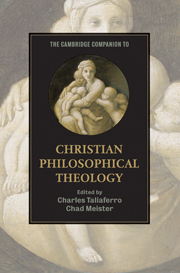13 - Religious rites
from Part II - God in relation to creation
Published online by Cambridge University Press: 28 May 2010
Summary
What are religious rites in general, and Christian rites in particular? A definition of religious rites needs to cover a wide range of acts that I simply list at the outset in order to record the breadth of practices that need to be covered. Religious rites include prayers involving praise (worship or adoration), petition and confession, vows, commissions such as ordination, rites of passage such as baptism, confirmation, marriage ceremonies, funeral rites and burials, communion or the Eucharist (also called mass, the Lord's supper), feasts, fasts, alms giving, vigils, lamentations, blessings, thanksgiving, grace before meals, and contemplative or meditative prayer. By way of a general definition of religious rites, I suggest the following: religious rites are repeatable symbolic action involving the sacred. There may be times when it is not obvious whether one is participating in a religious rite. For example, one may pray to God without engaging in a rite, but once that prayer forms a pattern that can be repeated and employs symbolic action such as bowing the head, folding hands, and so on, one is at least in the early stages of engaging in a rite. While some religious acts may not be clear cases of ritual, I take it that the current definition would cover all or most of the formal acts of prayer, praise, and so on, carried out in mosques, temples, ashrams, cathedrals, churches, and Christian communities today.
- Type
- Chapter
- Information
- The Cambridge Companion to Christian Philosophical Theology , pp. 183 - 200Publisher: Cambridge University PressPrint publication year: 2009
- 1
- Cited by



